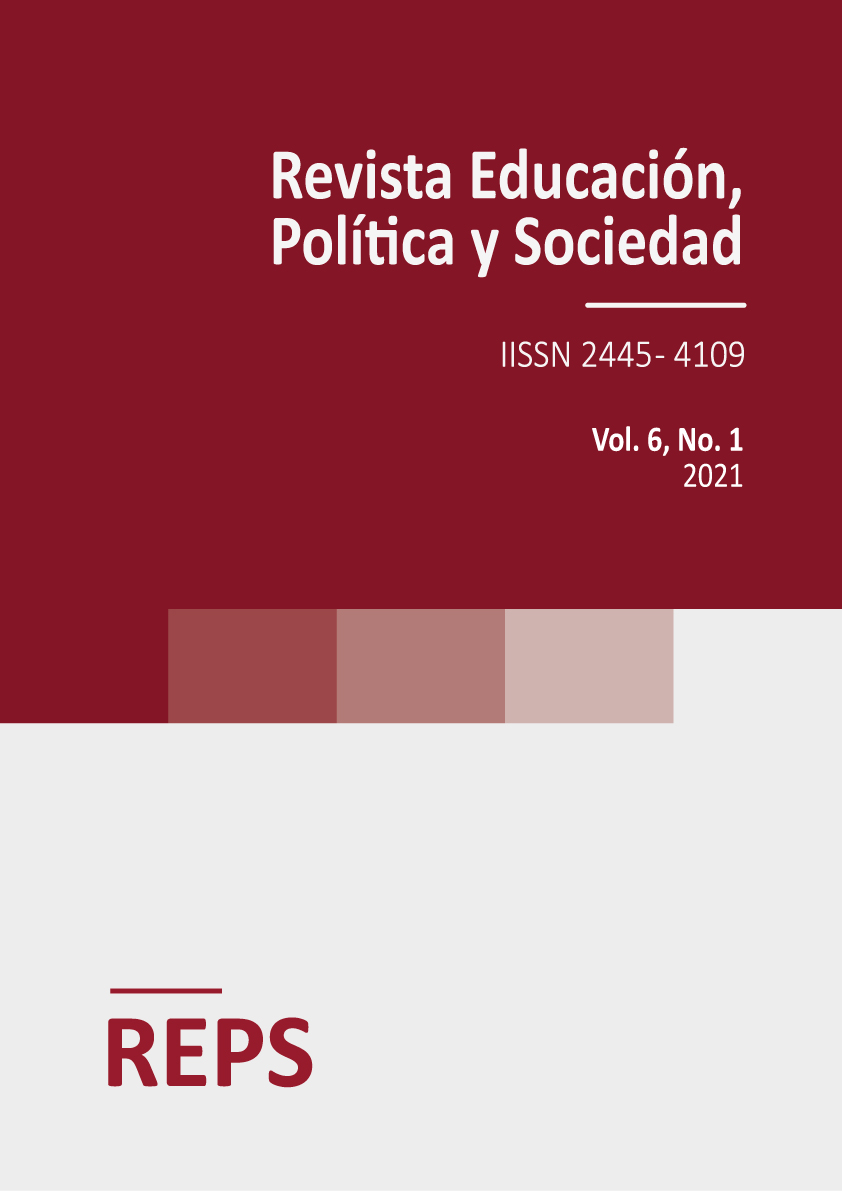Secondary Education: parallels between the Institución Libre de Enseñanza and the new bill of education in Spain
Keywords:
Institución Libre de Enseñanza, secondary sducation, new bill of education, methodologies
This work is licensed under a Creative Commons Attribution-NonCommercial 4.0 International License.
Abstract
The Institución Libre de Enseñanza wanted to redefine the raison d’être of the second education. With the arrival of the civil war the Institución disappears and, with it, all the pedagogical innovations that were implemented. The reinstatement of democracy brings with it the approval of successive educational laws that try to adapt the Spanish educational system to each specific social situation. The purpose of this essay is to help define the being of the second education in the Spanish educational field, relying on the pedagogical principles that guided the educational work of the Institución Libre de Enseñanza and trying to establish parallels with the basis of the new bill of education that is currently in its parliamentary procedure in Spain.
Downloads
References
Bolívar Botia, A. (2015). The Comprehensive School in Spain: A Review of its Development Cycle and Crises. European Educational Research Journal, 14 (3-4), 347-363. https://doi.org/10.1177/1474904115592496
Díez de Velasco, F. (2016). La enseñanza de las religiones en la escuela en España: avatares del modelo de aula segregada. Historia y Memoria de la Educación, 4 (2), 277-306. https://doi.org/10.5944/hme.4.2016.15484
Escámez Sánchez, J., y Sanz Ponce, R. (2011). Los fines de la Educación Secundaria en la sociedad española actual. Edetania, 39 (1), 43-56.
García Pedraza, R. (2015). Desafíos a la igualdad en el siglo XXI: dificultades y retos del modelo de escuela comprensiva. Revista Española de Educación Comparada, 26 (2), 135-152. https://doi.org/10.5944/reec.26.2015.14445
Giner de los Ríos, F. (1927). Ensayos menores sobre educación y enseñanza (II). Madrid: Espasa-Calpe.
Giner de los Ríos, F. (1933). Estudios sobre educación. Madrid: Espasa-Calpe.
Jiménez García, A. (1985). El krausismo y la Institución Libre de Enseñanza. Madrid: Cincel.
Ministerio de Educación y Formación Profesional (MEFP) (2019a). LOMLOE. Nuevos cambios educativos. Educación de calidad con equidad. Disponible en https://bit.ly/2SECNW1
Ministerio de Educación y Formación Profesional (2019b). Proyecto de Ley Orgánica por la que se modifica la Ley Orgánica 2/2006, de 3 de Mayo, de Educación. Disponible en https://bit.ly/3deXpxg
Molero Pintado, A. (2000). La Institución Libre de Enseñanza. Un proyecto de reforma pedagógica. Madrid: Biblioteca Nueva.
Puelles Benítez, M. de (2010). Política y educación en la España contemporánea. Madrid: UNED.
Puelles Benítez, M. de (2011). La educación secundaria en la España democrática: antecedentes, problemas y perspectivas. Cadernos de Pesquisa, 144 (3), 710-731. https://doi.org/10.1590/S0100-15742011000300004
Turín, Y. (1967). La educación y la escuela en España de 1874 a 1902: liberalismo y tradición. Madrid: Aguilar.
Viñao Frago, A. (1982). Política y educación en los orígenes de la España contemporánea. Examen especial de sus relaciones en la enseñanza secundaria. Madrid: Siglo XXI.

